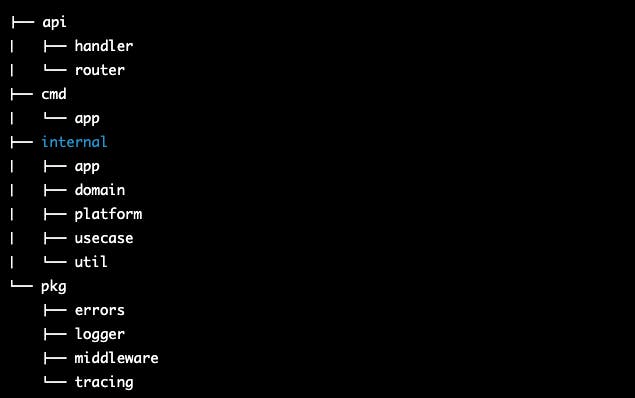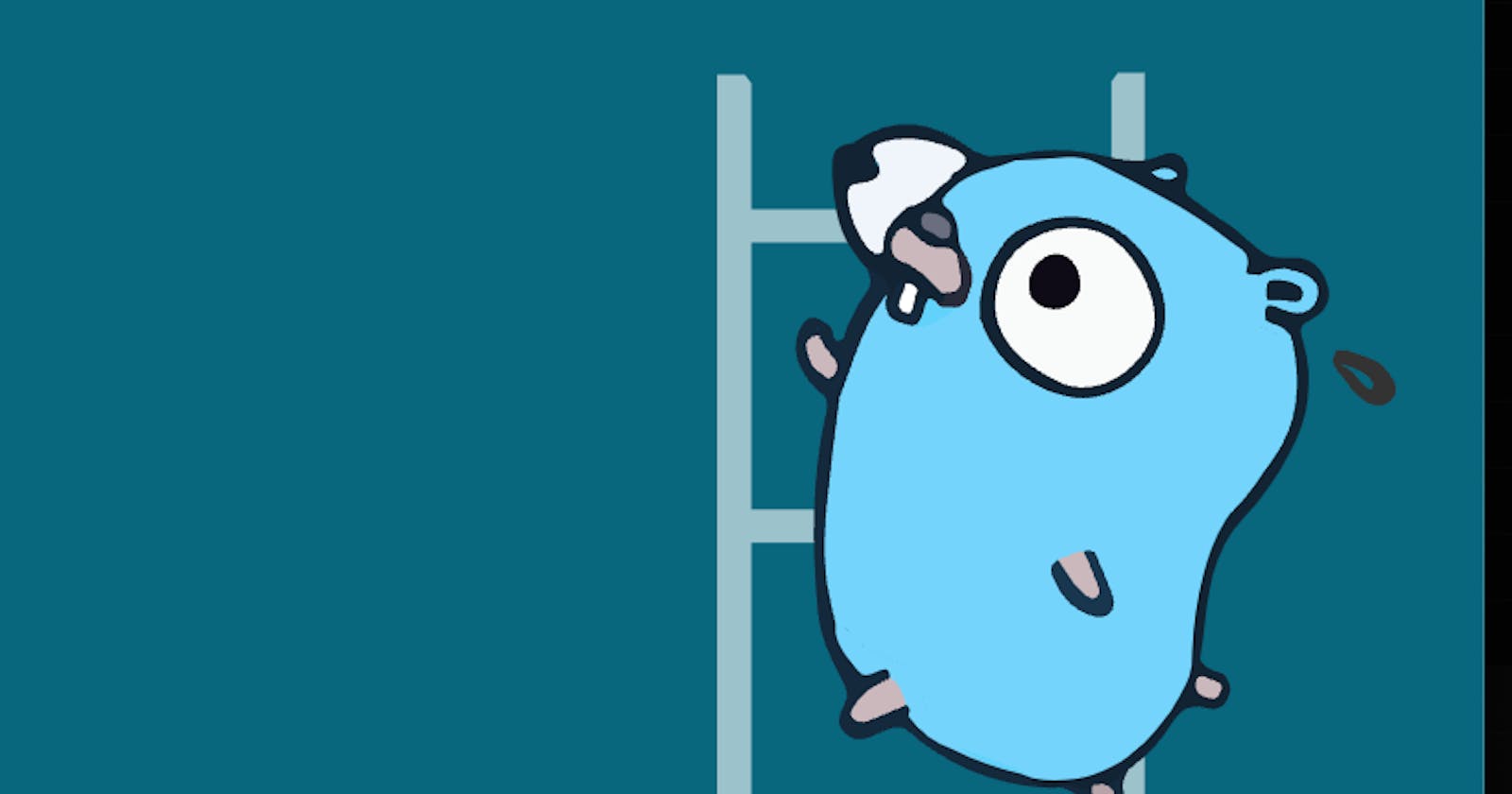Clean architecture is an approach to designing software systems that separates the concerns of the system into distinct layers, intending to create a system that is maintainable, testable, and scalable.
Here is an example of a clean architecture folder structure for a Go project:

API: This package contains the code that handles incoming HTTP requests and routes them to the appropriate handler. It typically includes a router package for defining the routes and a handler package for implementing the request-handling logic.cmd: This package contains the entry point for the application, including any code that is specific to running the application. It typically includes a main package with amain()function that starts the application.internal: This package contains the core business logic of the system, including the domain model, use cases, and any other business-specific logic. It is typically divided into several sub-packages, such asappfor application-specific logic,domainfor the domain model,usecasefor the use cases, andutilfor utility functions.pkg: This package contains reusable packages that can be used across multiple projects. It is typically divided into several sub-packages, such aserrorsfor error handling,loggerfor logging,middlewarefor HTTP middleware, andtracingfor tracing and monitoring.
By separating the concerns of the system into these distinct packages, you can create a Go project that is maintainable, testable, and scalable and separates the concerns of system into distinct layers.
few additional things to consider when trying to write clean architecture in Go:
Dependency injection: One of the key principles of clean architecture is to depend on abstractions, rather than concrete implementations. In Go, you can use dependency injection to achieve this by passing in the dependencies as function arguments, rather than hardcoding them into the code. This makes it easier to test the code and to swap out different implementations.
Use interfaces to define the boundaries between layers: In clean architecture, the layers of the system are separated by their boundaries, which are defined by the interfaces that are used to communicate between the layers. By defining the interfaces that each layer depends on, you can create a clear separation between the layers and make it easier to test and maintain the code.
Use a consistent naming convention: A consistent naming convention can help to make your code more readable and easier to understand. In Go, it is common to use camelCase for package names and CamelCase for type names.
Write tests: Writing tests is an important part of maintaining a clean architecture. By writing tests for each layer of the system, you can ensure that the code is correct and that the boundaries between the layers are working as intended.
Overall, the goal of clean architecture is to create a system that is maintainable, testable, and scalable, and that separates the concerns of the system into distinct layers. By following these principles and considering these additional factors, you can create a clean architecture in Go that is lean and simple.

